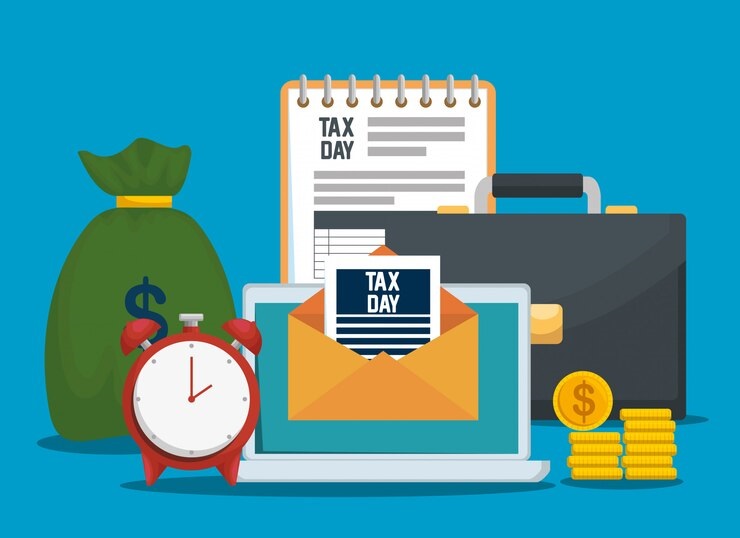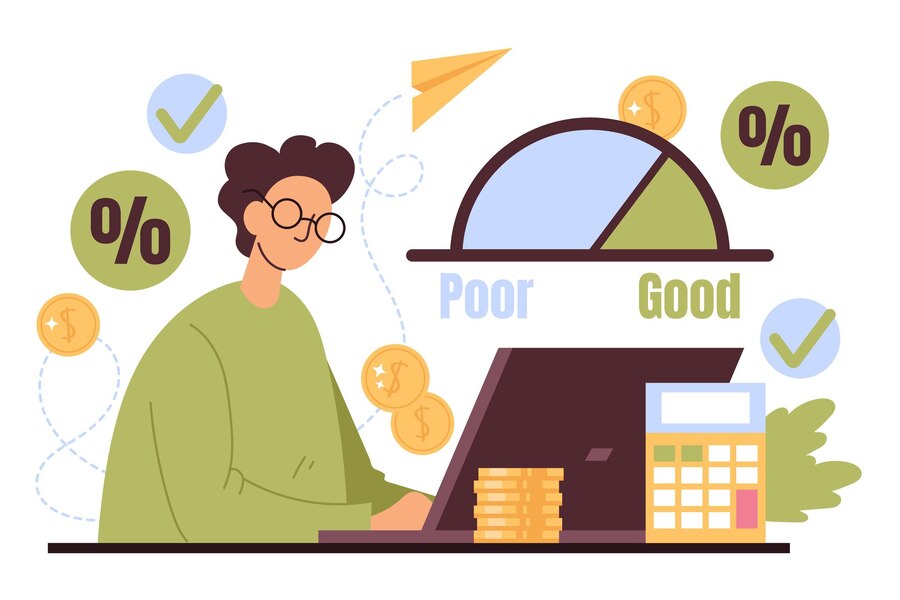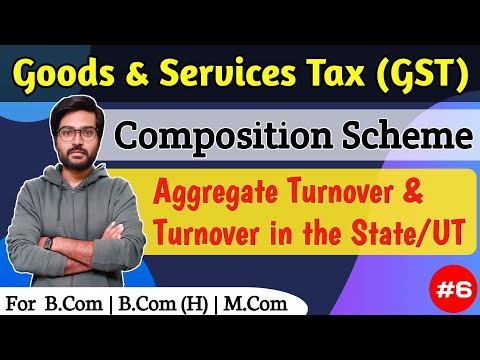Key Takeaways
- The GST Composition Scheme offers simplified compliance and lower tax rates for small businesses.
- Eligible businesses can benefit from minimal record-keeping and quarterly tax payments.
- Participants cannot charge GST to customers and must issue a bill of supply instead of a tax invoice.
- The scheme restricts participants from making interstate supplies and e-commerce sales.
- Businesses opting for the scheme cannot claim input tax credit.
- The scheme is designed to ease the tax compliance burden, making it more manageable for small enterprises to comply with GST regulations.
The Goods and Services Tax (GST) in India introduced a game-changing approach to indirect taxation, aiming to unify the country’s tax structure and boost the economy by eliminating tax-on-tax (or cascading effect).

One pivotal aspect of GST is the Composition Scheme, a voluntary scheme designed for small taxpayers to simplify their tax obligations, reduce compliance costs, and facilitate ease of doing business.
GST Composition Scheme Rates & Rules
The Goods and Services Tax (GST) Composition Scheme is a simplified taxation mechanism designed for small taxpayers to ease the burden of compliance and reduce their tax liability.
It allows eligible businesses to pay GST at a fixed rate of their turnover threshold limitswithout the need to track and manage tax on every transaction. Here’s an overview of the key rules governing the GST Composition Scheme:
- Eligibility Criteria: The scheme is available to taxpayers with an annual aggregate turnover of up to Rs. 1.5 crore. For businesses located in the North-Eastern states and Himachal Pradesh, the threshold is Rs. 75 lakh. This limit pertains to all businesses registered under a single PAN across India.
- Rate of Tax: Under the Scheme, the rate of GST is significantly lower compared to the normal tax rates. It varies by type of business.
- Manufacturers and producers: 1% (0.5% CGST + 0.5% SGST)
- Traders and retailers: 1% (0.5% CGST + 0.5% SGST)
- Restaurants not serving alcohol: 5% (2.5% CGST + 2.5% SGST)
- Restrictions on Input Tax Credit (ITC): Businesses opting for the Composition Scheme cannot claim Input Tax Credit for GST paid on their purchases.
- Ineligibility for Inter-State Sales: Composition dealers are not permitted to make inter-state sales. They can only supply goods or services within their own state or union territory.
- No Collection of Tax: Businesses under this scheme cannot charge GST from their customers. Consequently, they must bear the tax cost themselves.
- Bill of Supply: Instead of tax invoices, composition dealers are required to issue a bill of supply for their sales, indicating that GST cannot be charged on the transaction.
- Compliance and Returns: Composition dealers are required to file GST returns quarterly using Form GSTR-4 and an annual return using Form GSTR-9A. This reduces the compliance burden compared to regular taxpayers,who must file monthly returns.
- Conversion and Withdrawal: If a taxpayer wishes to switch from the regular scheme to the Composition Scheme or vice versa, they must file an application in GST CMP-02 form to opt into the scheme Form GST CMP-04 to withdraw from it. Withdrawal or switching is allowed only at the beginning of the fiscal year.
- No Supply of Non-Taxable Goods: Taxpayers under the Scheme are prohibited from supplying non-taxable goods, goods through an e-commerce platform, and services other than restaurant-related services.
- Notification Requirement: Businesses opting for the Composition Scheme must prominently display a notice at their place of business and on their invoices, stating that they are composition taxpayers.
Composition Scheme GST Rate
The GST Composition Scheme offers a simplified taxation process for small taxpayers, allowing them to pay GST at a fixed rate of their turnover, which is considerably lower than the rates applicable under the regular GST regime.

This scheme is aimed at reducing the compliance burden on small businesses. Here are the GST rates applicable under this scheme categorized by the nature of the business:
- Manufacturers and Producers (other manufacturers of ice cream, pan masala, or tobacco): The GST rate for manufacturers and producers under the Composition Scheme is set at 1% of the turnover. This rate is divided equally between the Central GST (CGST) and State GST (SGST), making it 0.5% CGST and 0.5% SGST.
- Traders and Retailers: Traders and retailers who opt for the Composition Scheme are required to pay GST at the rate of 1% of the turnover. Similar to manufacturers, this rate is split equally between CGST and SGST.
- Restaurants Not Serving Alcohol: Restaurants that do not serve alcoholic beverages and opt for the Composition Scheme are subject to a GST rate of 5% of the turnover. This rate is also equally divided between CGST and SGST, amounting to 2.5% each.
It’s important to note the following conditions and clarifications regarding the GST rates under the scheme:
- The rates mentioned are based on the turnover in the state or union territory, not on the profit.
- These rates are significantly lower compared to the standard GST rates, which can range from 5% to 28% for various goods and services under the regular scheme.
- Businesses opting for the composition scheme are not allowed to collect GST from their customers. Therefore, the tax amount paid under the scheme becomes a cost to the business.
- The reduced rates are designed to ease the tax compliance and administrative burden on small taxpayers by simplifying the tax payment process and reducing their tax liability.
- Services, with the exception of restaurant services, were initially not covered under the Composition Scheme. However, with amendments, certain service providers (with a turnover of up to Rs. 50 lakhs) have been allowed to opt for the scheme at a rate of 6% (3% CGST + 3% SGST).
GST Composition Scheme Return
The return filing process under the Composition Scheme is designed to reduce the compliance burden on small taxpayers. Here’s how the GST Composition Scheme return process work
- Quarterly Returns: Initially, composition dealers were required to file quarterly returns using Form GSTR-4. However, with changes in GST laws to further simplify compliance for small taxpayers, this requirement has been modified.
- Annual Return: Now, instead of filing quarterly returns, composition dealers are required to file only one annual return using Form GSTR-4 by the 30th of April following the end of the financial year. This annual return summarizes the sales, purchases, and GST paid during the year. It simplifies the process significantly for composition dealers by reducing the frequency of filings.
- Payment of Tax: Although the return is filed annually, composition dealers are required to pay GST on a quarterly basis. The payment of tax must be done through a challan in Form GST CMP-08 by the 18th of the month following the quarter. This payment serves as a declaration of their tax liability for the quarter, and the details furnished in CMP-08 are used to prepare the annual return.

Key Points to Remember
- No Input Tax Credit: Dealers under the Composition Scheme cannot claim Input Tax Credit (ITC) on their purchases. Hence, the details required in the returns are less complicated compared to those required from regular taxpayers.
- No Tax Collection: Composition dealers cannot charge GST to their customers. Therefore, the tax paid is a cost to the business, and this should be reflected in the returns.
- Limited Transactions: The scheme restricts dealers from engaging in inter-state supplies, e-commerce sales, and the supply of non-GST goods and services. These restrictions also simplify the return filing process as the transactions are more straightforward.
Compliance for Services
Service providers eligible for the Composition Scheme (with a turnover of up to Rs. 50 lakhs) follow similar return filing requirements, further extending the scheme’s benefits to small service providers.
- Penalties for Non-compliance
Failure to comply with the return filing requirements can result in penalties. It is crucial for composition dealers to adhere to the deadlines and ensure accurate reporting to avoid any legal or financial repercussions.
- Composition Scheme Forms under GST
There are specific forms for opting in and out of the Composition Scheme, as well as for filing returns, such as GST CMP-02 for opting in and GSTR-4 for quarterly returns.
GST Composition Scheme Bill Format
This requirement ensures transparency and informs the buyer that the seller is under the Scheme and that no GST is charged on the sold goods or services. Here’s a guide to the key elements that must be included in the bill format for composition dealers:
- Header: Clearly mention “Bill of Supply” at the top of the document, indicating that it is not a tax invoice.
- Business Details
- Name of the Business: The legal name as registered with the GST regime.
- Address of the Business: The principal place of business as per GST registration.
- GSTIN: The Goods and Services Tax Identification Number of the business.
- Customer Details (if applicable)
- Name of the Customer: Optional if the sale is to another registered business; mandatory for B2C transactions if the customer requests it.
- Address: Only required for B2B transactions or if the total value of the supply is more than ₹50,000.
- GSTIN of the Customer: Required for B2B transactions.
- Document Details
- Bill of Supply Number: A unique serial number for the document, not exceeding 16 characters, containing alphabets, digits, hyphens, and slashes.
- Date of Issue: The date when the bill of supply is issued.
- Product or Service Details
- Description of Goods/Services: A clear description of the goods or services supplied.
- HSN/SAC Code: The Harmonized System of Nomenclature code for goods or the Services Accounting Code for services.
- Quantity: The quantity of the goods supplied (number of items, kilograms, liters, etc.).
- Value: The total value of the supply, including the value of goods or services, discounts, and any other charges.
- Declaration: A statement indicating that the seller is a composition taxpayer and is not eligible to charge GST on supplies. This can be phrased as “composition-taxable person, not eligible to collect tax on supplies.”.
- Signature: The document must be signed by the authorized signatory of the business, which could be the owner, a partner, a director, or a person duly authorized by them.
Benefits of Opting in to the Composition Scheme
Opting for the Scheme can significantly reduce paperwork and compliance requirements, making it easier for small businesses to comply with GST regulations, among many others mentioned below.
| Benefit | Description |
|---|---|
| Simplified Compliance | Reduces paperwork and simplifies the tax filing process. |
| Lower Tax Rates | Offers significantly lower GST rates compared to the regular scheme. |
| Reduced Compliance Costs | It cuts down on the cost of tax compliance for small businesses. |
| Quarterly Tax Payments | Allows quarterly instead of monthly tax payments, easing the cash flow. |
| Minimal Record-Keeping | Requires less detailed record-keeping and bookkeeping. |
| Ease of Doing Business | Simplifies the tax regime for small taxpayers, making it easier to conduct business. |
| No Tax Collection | Eliminates the need to collect GST from customers, simplifying sales transactions. |
| Limited Audit Exposure | Lower chance of being audited due to the simplified nature of the scheme. |
How to Calculate the Aggregate Turnover for the Composition Scheme?
The aggregate turnover is calculated by summing up below-mentioned details
- Sum All Revenues: Add up the total value of all taxable, exempt, and non-GST supplies.
- Include Interstate Supplies: Add any interstate supplies you’ve made.
- Exclude Taxes: Do not include the GST amount in your calculations.
- Consider All Businesses: Include the turnover from all businesses under the same PAN.
- Exclude Inward Supplies: Do not count inward supplies under reverse charge.
- Annual Basis: Calculate on a financial year basis to determine eligibility.
Who can opt for the composition scheme under GST?
Small businesses with an aggregate turnover of up to Rs. 1.5 crore (Rs. 75 lakhs for special category states) can opt for the scheme. It is available to manufacturers, traders, and restaurants not serving alcohol.
Who cannot opt for the composition scheme under GST?
Businesses involved in interstate supplies, e-commerce operators, and suppliers of non-taxable goods, among others, cannot opt for this scheme.
How do I opt for the composition scheme under GST?
Eligible businesses can opt for the scheme by following the below filing process.
- Verify Eligibility: Confirm your business qualifies for the composition scheme.
- GST Portal Access: Log in to the GST portal.
- Submit Form GST CMP-02: Choose ‘Application to Opt for Composition Levy’ and file Form GST CMP-02.
- File Form GST ITC-03: If applicable, detail stock and input tax credit in Form GST ITC-03 within 90 days.
- Receive Acknowledgment: Automatic acknowledgment after submission.
- Adhere to Rules: Follow scheme-specific billing and tax rules.
- Annual GSTR-4 Filing: File GSTR-4 by April 30 each year.
- Monitor Compliance: Regularly check eligibility criteria adherence.
GST Payment Process for Composition Dealers
Composition dealers must pay tax quarterly, based on their fixed percentage of turnover, and file GSTR-4 annually by the 30th of April, following the end of the financial year.
- Calculate Tax: Determine quarterly tax based on fixed turnover percentage.
- Generate Challan: Use GST portal to generate payment challan.
- Pay Quarterly: Make tax payments quarterly by the 18th of the month following the quarter.
- Annual Return: File GSTR-4 annually, including tax payment details.
- No Input Tax Credit: Remember, composition dealers cannot claim input tax credit.
Billing Process for a Composition Dealer
The billing process for a dealer under the GST regime is streamlined to simplify compliance for small taxpayers. Here’s a brief explanation of how it works:
- Issue Bill of Supply: Unlike regular GST taxpayers who issue tax invoices, composition dealers must issue a bill of supply for each sale they make. This is because they are not allowed to charge GST on their sales to customers.
- No GST Charged: The key difference in the bill of supply is that it does not include a charge for GST. This is because the composition dealer pays GST at a fixed rate on their turnover, not on individual transactions.
- Include Statement: It’s mandatory for the bill of supply to carry the statement “Composition taxable person, not eligible to collect tax on supplies.” This informs the recipient that no GST has been charged on the transaction and that the seller is a composition dealer.
- Maintain Records: They are required to maintain detailed records of all bills of supply they issue. This helps in ensuring transparency and facilitates easier compliance and auditing.
- Report Sales: While they have simplified tax filing requirements, they must still report their total sales while filing their annual return using Form GSTR-4. This return consolidates their sales and tax information for the entire year.
- Comply with Rules: They must adhere to specific billing rules and regulations set under the GST Composition Scheme. This includes the formats of the bills of supply and the details that must be included on them to ensure they are in compliance with GST laws.
Return Obligations for Composition Dealers
Composition dealers under the GST regime have simplified return filing obligations compared to regular taxpayers. Here’s an overview of their requirements:
| Requirement | Detail |
|---|---|
| Return Type | Annual return using Form GSTR-4 |
| Due Date for Filing | By April 30th of the following financial year |
| Payment Frequency | Quarterly GST payments |
| Payment Form | GST PMT-06, by the 18th of the month following the quarter |
| Monthly Returns | Not required for composition dealers |
| Input Tax Credit | Cannot claim Input Tax Credit |
| Sales Document | Must issue a bill of supply, not a tax invoice |
| Transaction Reporting | Aggregate turnover details in GSTR-4, not transaction-wise |
Calculating Tax Amount for Composition Dealers

Calculating the tax amount for GST Composition Dealers involves a straightforward process based on their turnover and the fixed rate applicable to their business type. Here’s how it’s done:
- Determine Applicable Rate: Identify the GST rate applicable to your business under the Scheme. Rates are typically lower than standard GST rates, varying as follows:
- 1% for manufacturers and traders,
5% for restaurants not serving alcohol. - Calculate Turnover: Sum up your total revenue from sales within the state or union territory for the given period. Remember, only intra-state supplies are allowed for this dealers.
- Apply GST Rate: Multiply your total turnover by the applicable GST rate. For example, if you are a trader with a turnover of Rs. 10,00,000 and the rate is 1%, your GST due would be Rs. 10,000.
- Quarterly Payment: Although the return is filed annually, the tax calculated must be paid quarterly. Divide your annual tax amount by four to find out your quarterly payment.
Conclusion
Through the GST Composition Scheme, small businesses are provided with the convenience of lower tax rates and lower kickbacks. It’s the perfect type for people who’ve got a lot of paperwork to deal with GST registrations.
Nevertheless, companies have to appreciate the fact that there are certain restrictions to the scheme, including the inability to claim input tax credit and restrictions on inter-state trade. By blending the advantages with these constraints, small businesses can decide if the Composition scheme is suitable for their operations.
Through this scheme, the government is developing strategies that will support grassroots businesses by mitigating the costs of doing business and boosting GST compliance levels.
💡To explore how PICE business payment application can help you to manage all your business payments, gst, vendor payments, rent, etcc from one place and with credit card payment. Request a demo with Pice
FAQs
Can a service provider opt for the GST Composition Scheme?
Yes, certain service providers can opt for the GST Composition Scheme as of the changes implemented in April 2019. This option is available to service providers (and mixed suppliers of goods and services) with an annual turnover of up to ₹50 lakh. Under this scheme, they are required to pay GST at a rate of 6% (3% CGST + 3% SGST). This extension to service providers aims to simplify GST compliance and reduce the tax burden on small service-oriented businesses.
Is it mandatory for all small taxpayers to opt for the Composition Scheme?
No, it is not mandatory for all small taxpayers to opt for the GST Composition Scheme. This scheme is optional and primarily designed for small taxpayers who wish to simplify their GST compliance requirements. It’s suitable for businesses that can adhere to the scheme’s restrictions, such as not engaging in interstate sales or e-commerce activities. Small taxpayers who find these conditions feasible may choose to register under this scheme to benefit from lower tax rates and simpler tax filing procedures.
Can a composition dealer claim Input Tax Credit (ITC)?
No, a composition dealer cannot claim Input Tax Credit (ITC). The GST Composition Scheme offers a simpler compliance regime and lower tax rates, but it does not allow dealers to claim ITC on their inputs. This restriction is part of the trade-off for the simplified procedures and reduced tax liability, aiming to lessen the administrative burden on small businesses. Consequently, dealers under this scheme must absorb the GST paid on their purchases as a cost.
What happens if I cross the turnover limit for the Composition Scheme?
If you cross the turnover limit for the GST Composition Scheme, which is ₹1.5 crore for most states and ₹75 lakh for special category states, you must switch to the regular GST scheme. This transition involves notifying the tax authorities by filing Form GST CMP-04 and commencing regular GST compliance, including filing monthly returns and maintaining detailed records for tax purposes. This switch should be made effective from the day you exceed the turnover limit, and it’s essential to ensure all subsequent transactions comply with the regular GST rules.
Can I opt in and out of the Composition Scheme anytime?
You cannot opt in and out of the GST Composition Scheme at any time at will. To opt into the scheme, you must apply at the beginning of the financial year by filing Form GST CMP-02 before the stipulated deadline. If you wish to opt out of the scheme, or if you become ineligible, such as by exceeding the turnover limit, you must notify the authorities by filing Form GST CMP-04. Changes to registration status should align with the beginning of a financial year or immediately upon exceeding the turnover thresholds.








